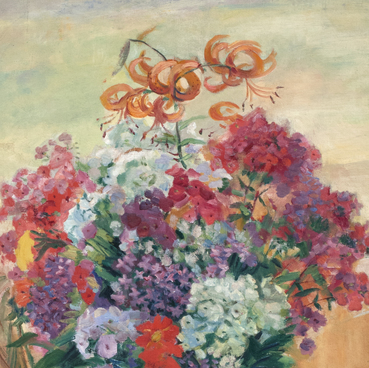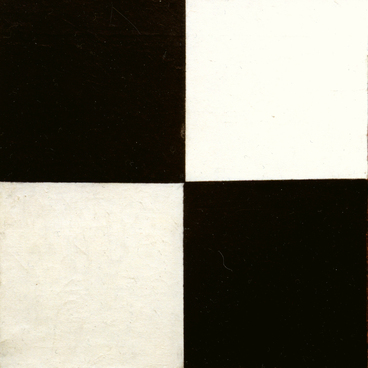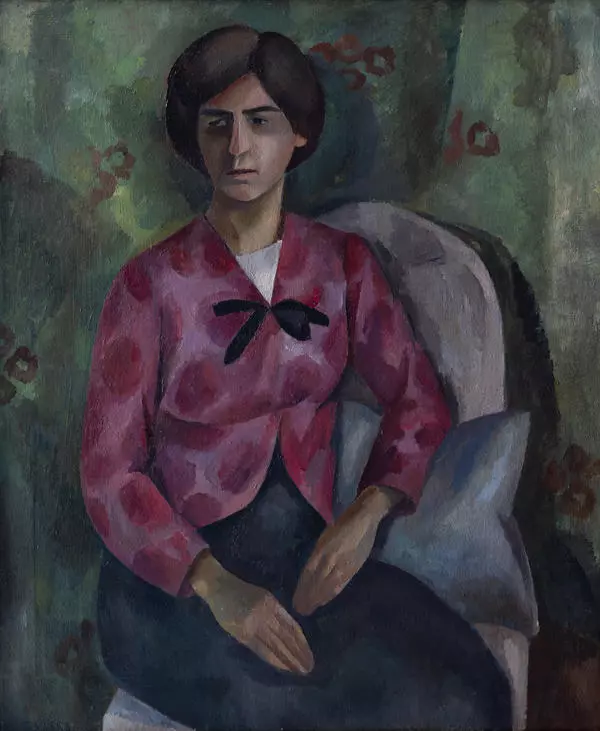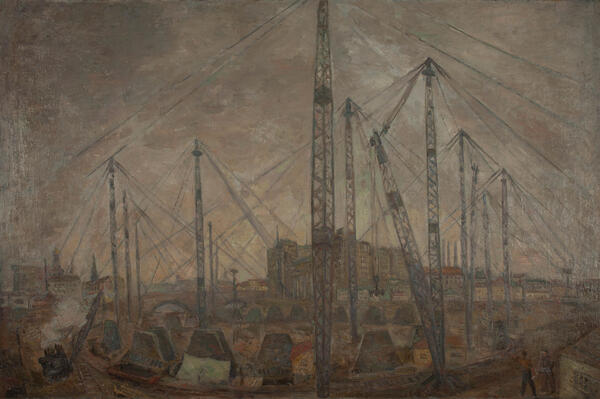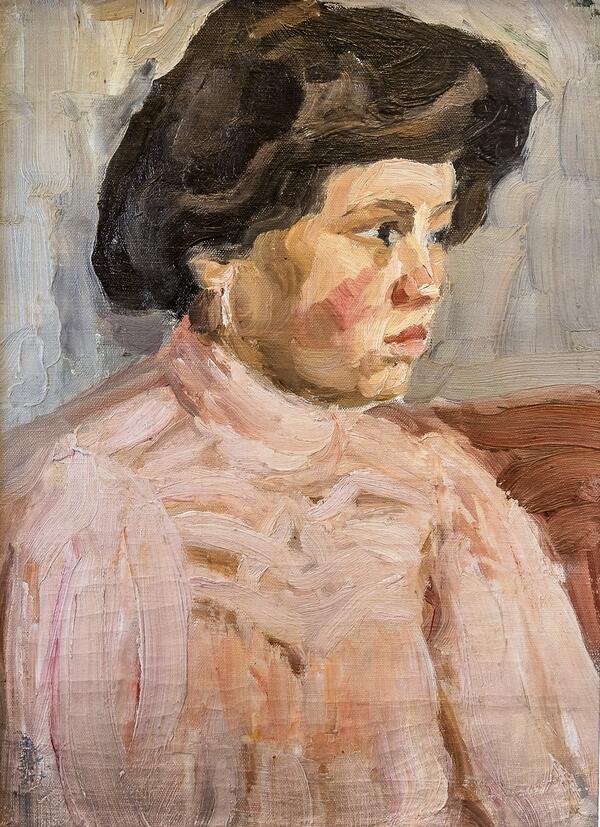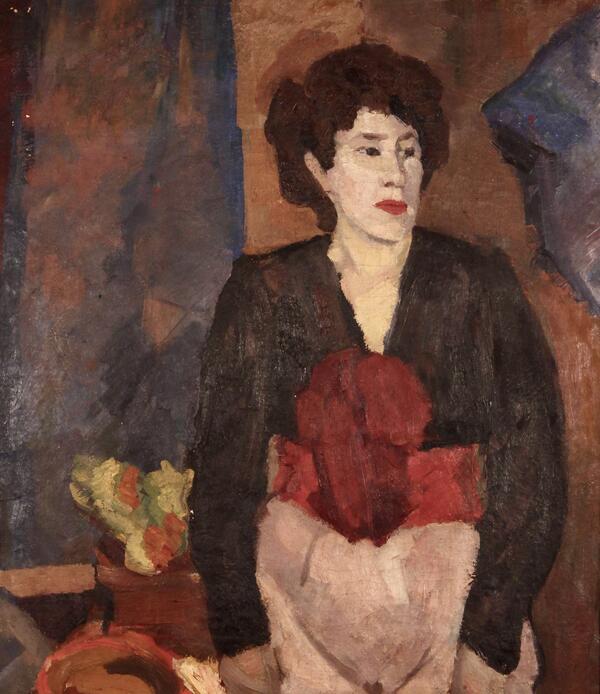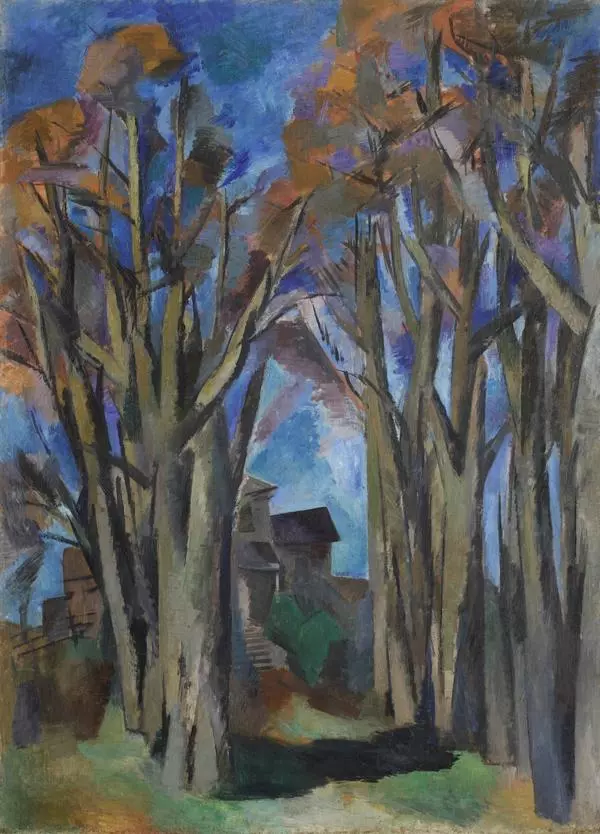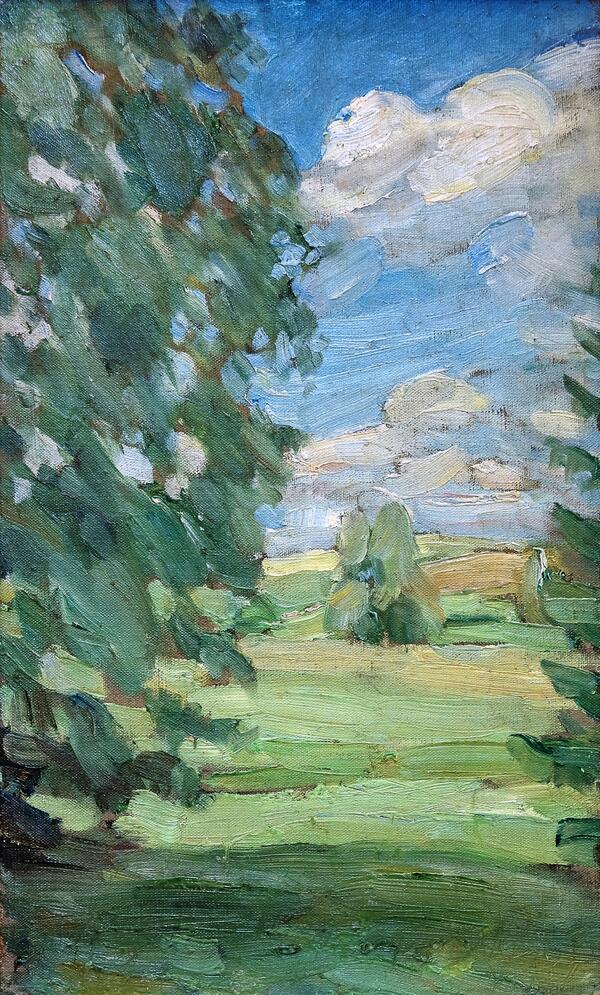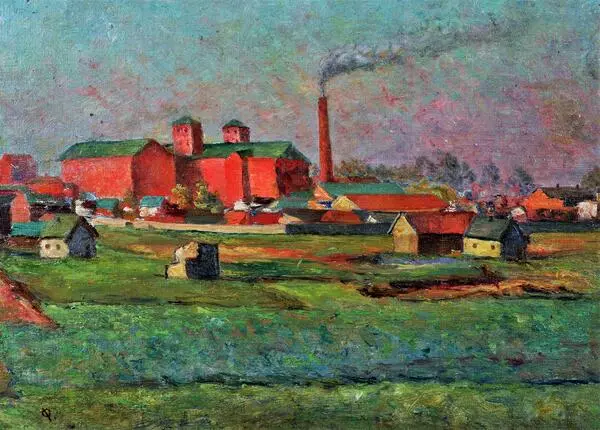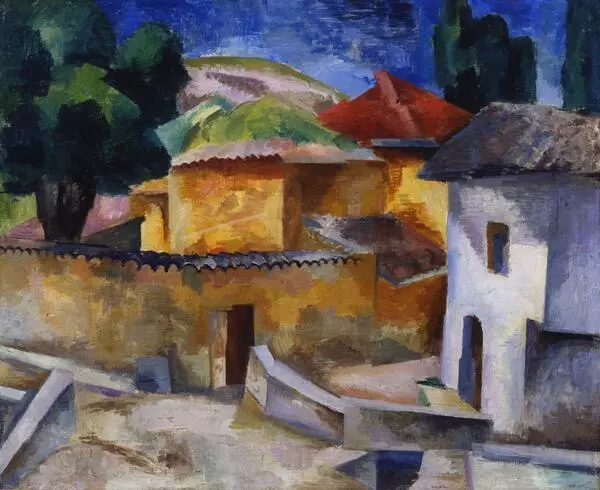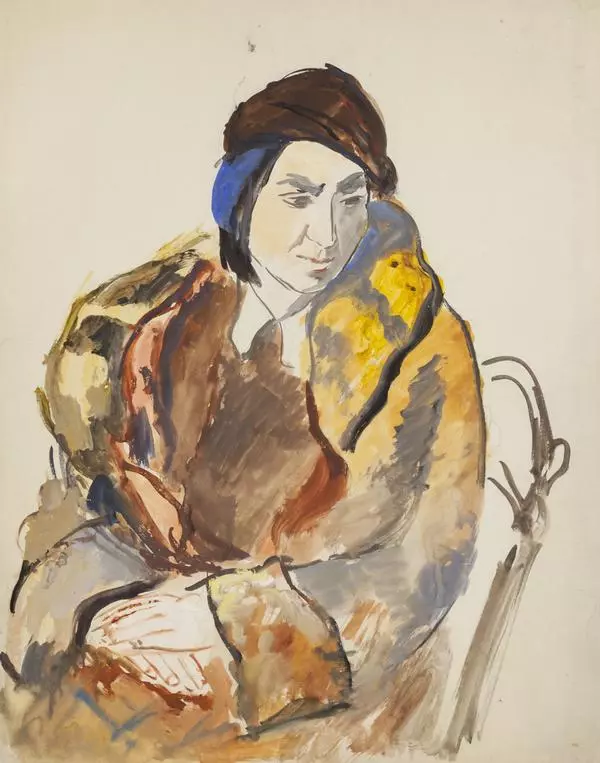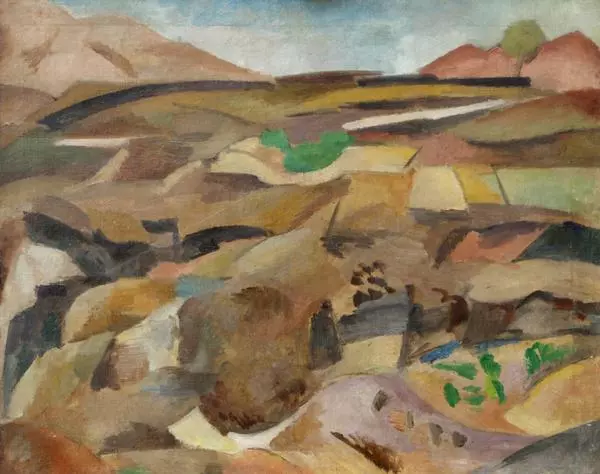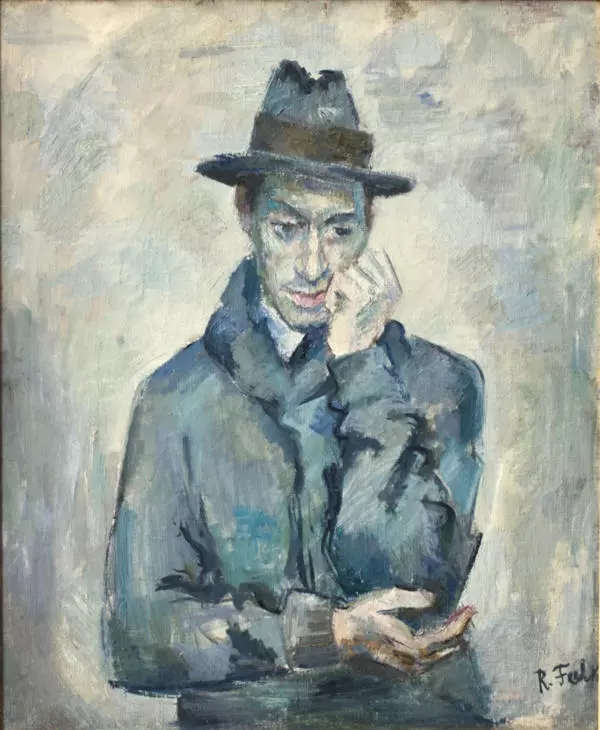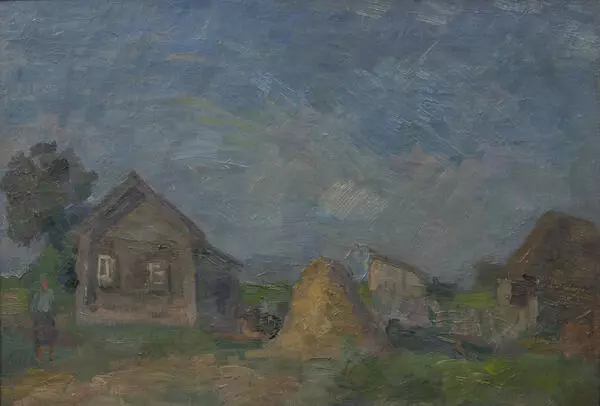Self-Portrait In Front of a Window was done in 1916, in the Crimea, in the town of Koza. This time period covers the most consummate works of art from the ‘Jack of Diamonds’ period in Falk’s work, and bears testimony to the transition from decorative cubism to cezannism, which was typical for all “Jacks” in the second half of the 1910s. Only the landscape with a cypress outside the window is reminiscent of the Crimea in Self- Portrait. In essence, it is not important for the artist where, and during what time period, the person is depicted. In addition, external resemblance does not matter, although it can be easily guessed, despite some deformation with the figure and his face.
The artist himself never called this painting a self-portrait. At exhibitions, it was displayed under the titles of Portrait, Man at the Window, and Portrait in Front of a Window. And the artist did not like the word “portrait”. “For him, it seemed too official, too archetypal.
The artist himself never called this painting a self-portrait. At exhibitions, it was displayed under the titles of Portrait, Man at the Window, and Portrait in Front of a Window. And the artist did not like the word “portrait”. “For him, it seemed too official, too archetypal.


